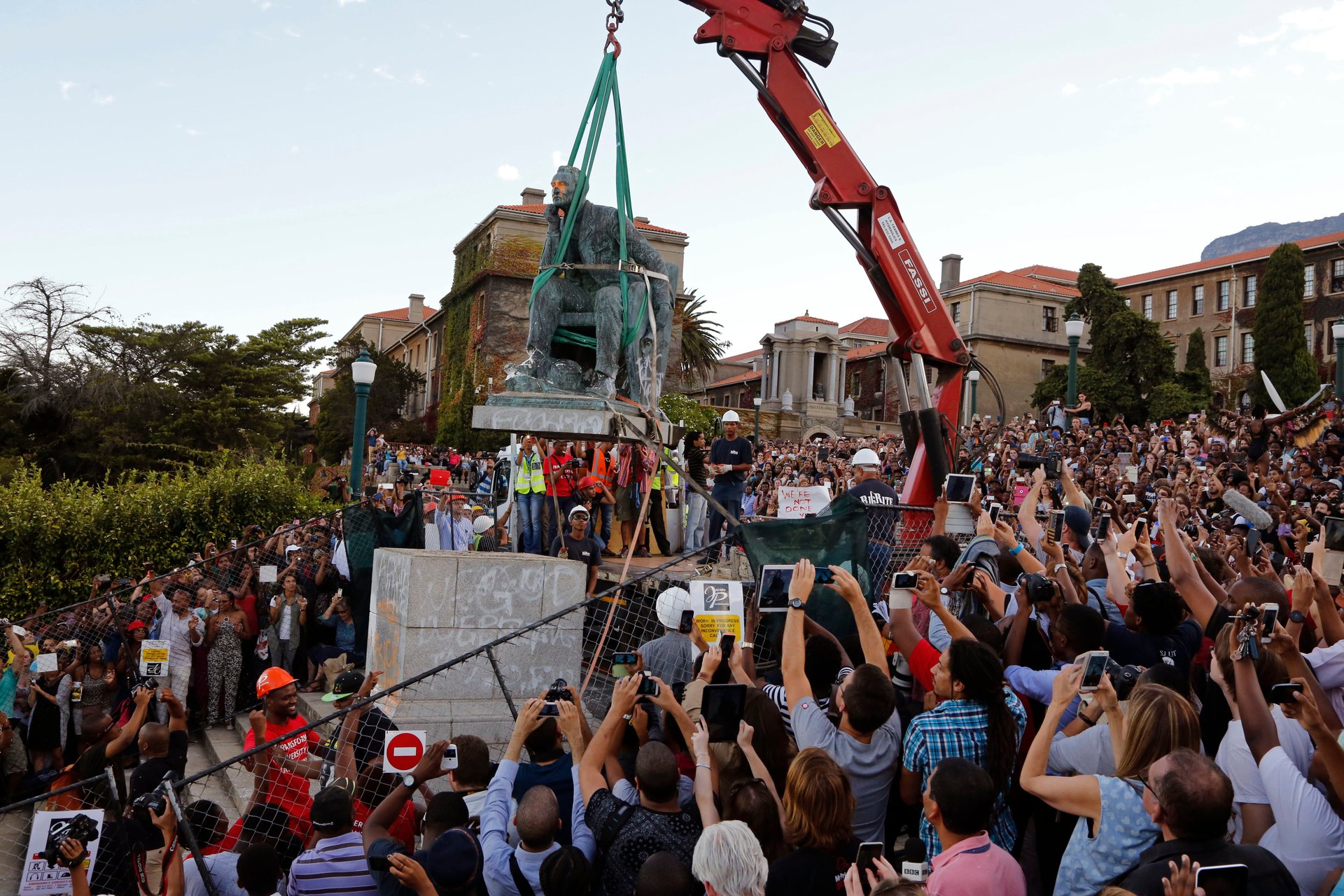When Cecil Rhodes’ statue fell it laid bare South Africa’s transformation challenges
Exactly one month ago, Chumani Maxwele, a 30-year-old student at the University of Cape Town (UCT), threw human waste over the statue of Cecil John Rhodes. This act of defiance by the young man against Rhodes’ statue was a symbol of how, despite the end of Apartheid and the gains over the past 21 years, South Africa is still battling to deal with institutional racism and inequality. For many here, the untransformed public monuments and spaces are oppressive reminders of the country’s Apartheid and colonial past


Exactly one month ago, Chumani Maxwele, a 30-year-old student at the University of Cape Town (UCT), threw human waste over the statue of Cecil John Rhodes. This act of defiance by the young man against Rhodes’ statue was a symbol of how, despite the end of Apartheid and the gains over the past 21 years, South Africa is still battling to deal with institutional racism and inequality. For many here, the untransformed public monuments and spaces are oppressive reminders of the country’s Apartheid and colonial past
After four weeks of protest action, national debates and a campaign that captured international attention, the statue of Cecil John Rhodes was removed from UCT’s campus on Wednesday evening. When the campaign started, many thought that it would be limited to a debate on Apartheid and colonial-era statues, signs and symbols, found in many public spaces across the country.
But it became about more than this. It opened up a space for South Africans to examine more closely how institutions like universities have failed to create inclusive environments, reform their curriculum to reflect South Africa’s challenges and of course, absorb and retain black South African academic staff and students at historically white universities.
“Next, the invisible statues”
As the statue came down last night, many had on their mind the question: “What next?” One answer to this is found on a placard that was carried by a black female UCT student, minutes before the removal of Rhodes’ statue, it read: “Next, the invisible statues.”
*Watch this video for scenes before and after the removal of the statue*
It was at a university wide assembly, held a week and a half ago, that the campaign grew its momentum. This assembly drew the largest audience of academic staff, students, university leaders and members of the public to deliberate about UCT and South Africa’s transformation challenges.
Speaking at the university-wide assembly, Puleng Stewart, a 23 year old drama student, emphasized that the #RhodesMustFall campaign advanced beyond the terrain of the statue.
“This is also a debate about pedagogy. It is about how we’re taught at UCT. For UCT to say that the Eurocentric framework of teaching is all we have at our disposal shows a lack of creativity,” said Stewart.
The question of curriculum reform is not new at UCT.
From 1996-1998, prominent African intellectual Mahmood Mamdani tried to bring the issue to the table: UCT, a university situated on the African continent, was not embedding the context and African scholarship in its curriculum.
Mamdani was suspended and went on to leave the university. This famous saga, signifying how reluctant South African institutions were to change even at the advent of democracy, is widely documented and is known as the Mamdani Affair.
At the assembly, Rorisang Moseli, a 20-year-old Politics, Philosophy and Economics (PPE) student reflected on how the debate on racism and discrimination is always met with suspicion in South Africa.
“South Africa was born out of a negotiated settlement. We have been negotiating since 1994, and now today, at this assembly, we need to prove that our pain and experiences of racism are real, and not imagined. Do we need to negotiate this to?” said Moseli.
“More than just a statue”
It was ultimately UCT’s council, its highest decision-making body, which ratified the call for the statue to be removed from the campus.
Reflecting on the university’s decision, UCT’s vice-chancellor, Dr. Max Price said:
Today marks the day that UCT decided that the statue of Cecil John Rhodes should come down. He will fall from the podium from which he’s surveyed this campus, this city and the continent for many decades. But it must be remembered not for his falling, but for what rose in his place. The campus community we’ve all longed and hoped for, the UCT we’re already in the process of becoming. Rhodes must fall. Out of his dust, may UCT rise.
The University’s Student Representative Council (SRC), as well as the #RhodesMustFall movement, detailed their plans to advance the momentum generated by this campaign. Over the next few months, the students will focus on strategies to deal with the underrepresentation of black academics and students, curriculum reform as well a review of the university’s labour practices..
As the statue – attached to a lever of the crane – was removed, a number of students took turns at standing on the plinth which the statue Rhodes had been positioned for over 81 years. Song, dance and jubilation ensued. Again, another female student held a placard which contains a message that sums up the events of the past month, it read:
“More than just a statue.”